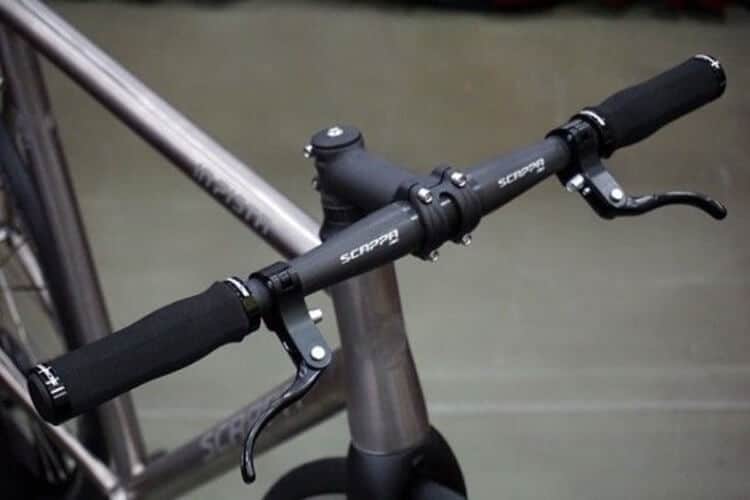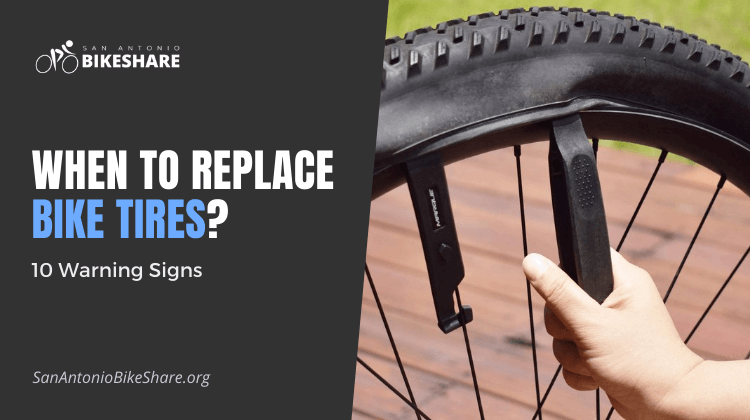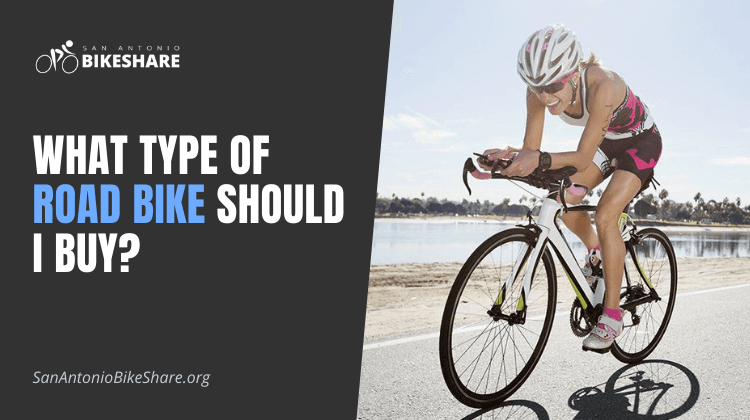Bike Handlebars Types: Types of Bicycle Handlebars
We rarely consider the different types of bicycle handlebars. Do you want to learn more about why it’s so important to choose the right handlebar style and the many types? You’ve come to the right site if you answered yes.
This article will teach you everything you need to know about different bike handlebars types.
What Is A Bicycle Handlebar?
The handlebar is one of the most significant components that connects you to your bike. If you don’t have a handlebar, you won’t be able to control the pace or direction of your bike. In addition to directing your bike, a handlebar supports a portion of your weight based on your riding position. In other words, your handlebar will have a significant impact on the stability and dependability of your bike.
Given the range of bicycle handlebar types available on the market, selecting bicycle handlebar types that are suitable to your riding style might be difficult. Furthermore, each has its own set of advantages and disadvantages. As a reason, it’s vital to understand the many types of handlebars, as this will help you choose the right one.
Bicycle Handlebars Types
Bicycle handlebars come in a number of types, each designed for a certain type of riding. As a result, certain bikes are better suited for mountain biking, while others are better suited for road cycling. The following are the most prevalent types of bike handlebars:
Flat Handlebars – Best Style For Mountain and Hybrid Bikes
Although flat bicycle handlebars are the most prevalent, there are numerous distinct types of bicycle handlebars. The handlebar’s center section is completely flat and bends gently towards the rider. When cycling on rough and uneven terrain, flat handlebars offer the advantage of providing a stable holding position. During a rising ride, it also allows you to lean forward, improving your leverage. Cross-country riders are well-known for utilizing this type of bike handlebar as a result.

The only drawback is that flat bars may only be held in one direction. Nonetheless, you can modify how you hold the handlebars by experimenting with different types of bar-ends. Furthermore, you may easily attach numerous biking equipment such as phone holders or lights to a bike with flat handlebars.
Drop Bars – Best Road Bike Handlebar Tape
The drop handlebar is another popular type of bike handlebar. On-road bikes, this is the most popular kind. The drop handlebars are designed to look like a ram’s horn.

A drop handlebar enables a range of hand placements, which is one of its benefits. As a result, this is the handlebar to choose if you want to ride for longer distances. You can easily position your body when riding a bike with a drop handlebar. Aside from that, road bike handlebars come in a variety of types. They can be identified by their breadth, drop length, and reach.
Riser Handlebars – Mostly Seen On BMX Bikes
This type of handlebar is comparable to flat bars. In contrast, a riser handlebar is often longer than a flat handlebar. The central area of riser handlebars rises from 10 to 45 millimeters. Riser bar bikes also allow you to sit in a more upright position. As a result, trail riding with a riser bar is a great idea.

Because you will be sitting erect when riding a bike with a riser handlebar, the weight distribution towards the front will be less. On the other side, this type of bicycle handlebar is quite expensive and robust.
Butterfly Bars – Best Handlebar Type for Touring Bikes
Butterfly bars are great for bicycles used for hiking and touring. You’ll notice that the stem on both sides of this handlebar has a C-shaped curvature. The design of the butterfly handlebar allows for five different hand positions, making it excellent for long-distance riding.

Butterfly handlebars offer the advantage of allowing you to ride in a number of positions. It will allow you to ride in either an upright or a bending position, for example. These types of bicycle handlebars have ample shelf space to carry vital stuff such as maps, phones, and small bags.
The uneven curves of butterfly handlebars, on the other hand, make them hefty. Although carrying extra weight isn’t a huge concern for most riders, it can be a problem for individuals who travel by bike and use a mounted bike rack.
Aero Handlebars
Another type of bike handlebar that mimics a road bike handlebar is the aero bar. This is the style of bike that many cyclists use during time trials when they battle against the clock alone. This handlebar contains both armrests and handgrips, unlike other types of handlebars.

Aero handlebar’s form allows you to lower your upper body while keeping your arms aligned with your torso. As a result, you’ll be able to take a more aerodynamic riding position. Furthermore, rather than providing a smooth ride, some riders use this handlebar to rest their wrists and arms.
On the other side, a bike with an aero handlebar puts you in danger because your hands will be away from the brakes. As a result, performing quick curves or avoiding road hazards may be challenging.
Bullhorn Handlebars
As the name implies, these bicycle handlebar types resemble the horns of a bull. These bike handlebars have a fully flat core with the ends curved forward and up. The most common type is a single-speed bike. The bullhorn handlebar provides an aerodynamic riding stance at high speeds. A bullhorn’s handlebar typically features three separate hand positions. Bar-ends, on the other hand, can be connected to improve the hand posture for extra comfort.

Furthermore, riding uphill provides you with a lot of control because you can quickly move your body back and forth. Bullhorn handlebars, on the other hand, aren’t ideal for making tight turns frequently. Check out our article on the best bullhorn handlebars if you’re seeking the best bullhorn handlebars.
Cruiser Handlebars
Another type is the cruiser handlebar, often known as upright or North Road handlebars. With a cruiser handlebar, you can ride your bike while sitting completely upright. Cruiser motorcycles also have a variety of handlebars, including curved and flat bars.

The disadvantage of a cruiser handlebar is that it necessitates more seat padding. If you ride upright, more weight will be transferred to your bike seat. As a result, biking for longer distances will cause your buttocks to suffer.
How to Choose a Bike Handlebar?
As previously stated, bike handlebars are an essential component of your bike. It will alter your riding position, comfort, and weight distribution significantly. As a result, finding a bike handlebar that is right for you is crucial. When buying a bike handlebar, there are a few crucial things to keep in mind.
Handlebar Width
One of the most significant elements to consider when buying a bike handlebar is the width. The arms and neck will be strained if the handlebar is too wide. On the other hand, a narrow handlebar will make you feel claustrophobic. As a result, you should choose a bike handlebar that suits your needs. It will make you feel more at ease when biking and will help you improve your performance.
The best way to figure out what handlebar width you need is to measure the width of your shoulders. This measurement will serve as a starting point for your research. For example, if your shoulder distance is 34 cm, you should opt for a handlebar with a similar range. It’s worth mentioning, though, that many manufacturers build handlebars with the average shoulder width in mind. Many bikers, however, do not have a normal shoulder width. In such cases, you can choose to go up or down a size, depending on your preferences.
Handlebar Shape
Because each rider’s riding style is unique, choosing the right handlebar form is a very personal decision. As a result, we can’t recommend the best handlebar shape for you. Compact handlebars, on the other hand, are an excellent alternative for a stress-free ride. The lowest point of the drop is higher up on a tiny handlebar. You can choose ergonomic handlebars if you hold the handlebar at the center point and desire a reasonable drop.
FAQs
The following are some frequently asked questions:
How High Should Handlebars Be On A Bike?
How you react to this question will be determined by your riding style. Raising the height of your handlebar allows you to ride in a more upright position. Lowering the handlebar height, on the other hand, will cause you to hunch over when riding. If you want to reduce stress on your arms, wrists, back, and neck, your handlebar should be higher than your seat.
Which Material Is Better For Handlebars?
A bike handlebar can be made of aluminum or carbon fiber. Aluminum handlebars are more expensive and heavier than carbon-fiber handlebars, which are lighter and less expensive. Additionally, any damage to an aluminum handlebar is visible. If you’re biking on rough terrain, the aluminum handlebar will come in handy. The carbon-fiber handlebar, on the other hand, will be great if you are concerned about the weight of your bike.
Which Handlebar Width Should You Choose?
When it comes to choosing the correct handlebar width for your bike, it’s all a matter of personal preference. A broader handlebar is advised if you plan on biking for longer distances. As a result, you’ll be able to exert more power. Adopting a broad handlebar, on the other hand, can make beginners feel more stretched while riding. It will also be difficult for them to avoid obstacles.
For trail riding, a handlebar with a width of 740 millimeters is popular. On the other hand, many cross-country cyclists prefer handlebars that are slightly narrower, ranging from 680 to 700 millimeters.
How Does The Handlebar Height Affect Handling?
You will notice a big improvement in handling when you lower the stack height on your bike. This is because it will transfer adequate weight to the handlebar, resulting in even weight distribution across your bike. When riding for a long time, though, too much strain on your hands can cause problems.
Should You Get Drop Handlebars?
Drop bars are great for first-time riders and non-cyclists alike. This type of handlebar necessitates the use of tape, which should be changed on a regular basis. Flat bars, on the other hand, maybe more accessible to some riders due to their improved visibility and control.
Why Do My Wrist Bones Hurt When Biking?
According to experts, this type of stiffness occurs when your bike saddle is too narrow for your sit bones. This is because the weight of your body puts tension on your sit bones, making biking difficult.
How Can You Choose The Best Mountain Bike Handlebars?
Consider your riding style first when looking for the best mountain bike handlebars. For example, when it comes to a cross-country handlebar, minimal weight is crucial. A bike handlebar, on the other hand, must be relatively strong for a downhill ride. The next step is to select the material for your handlebar. Carbon-fiber handlebars are lighter, but they are more expensive. Aluminum handlebars, on the other hand, are a good option if you’re looking for a low-cost, high-quality handlebar.
Conclusion
To summarize, the type of bicycle handlebars is crucial. It’s an essential part of the bicycle; without it, you wouldn’t be able to control it. The bike handlebar you choose will have a significant impact on your overall bicycling performance. As a result, selecting the right bike handlebar is essential.
Bike handlebars today come in a range of shapes and sizes, each with its own use and purpose. As a result, selecting the best bike handlebar might be challenging. Using this comprehensive guide as a starting point, however, will be advantageous.
Consider the width, shape, and riding style you’ll be employing while choosing the best handlebar for your bike.







